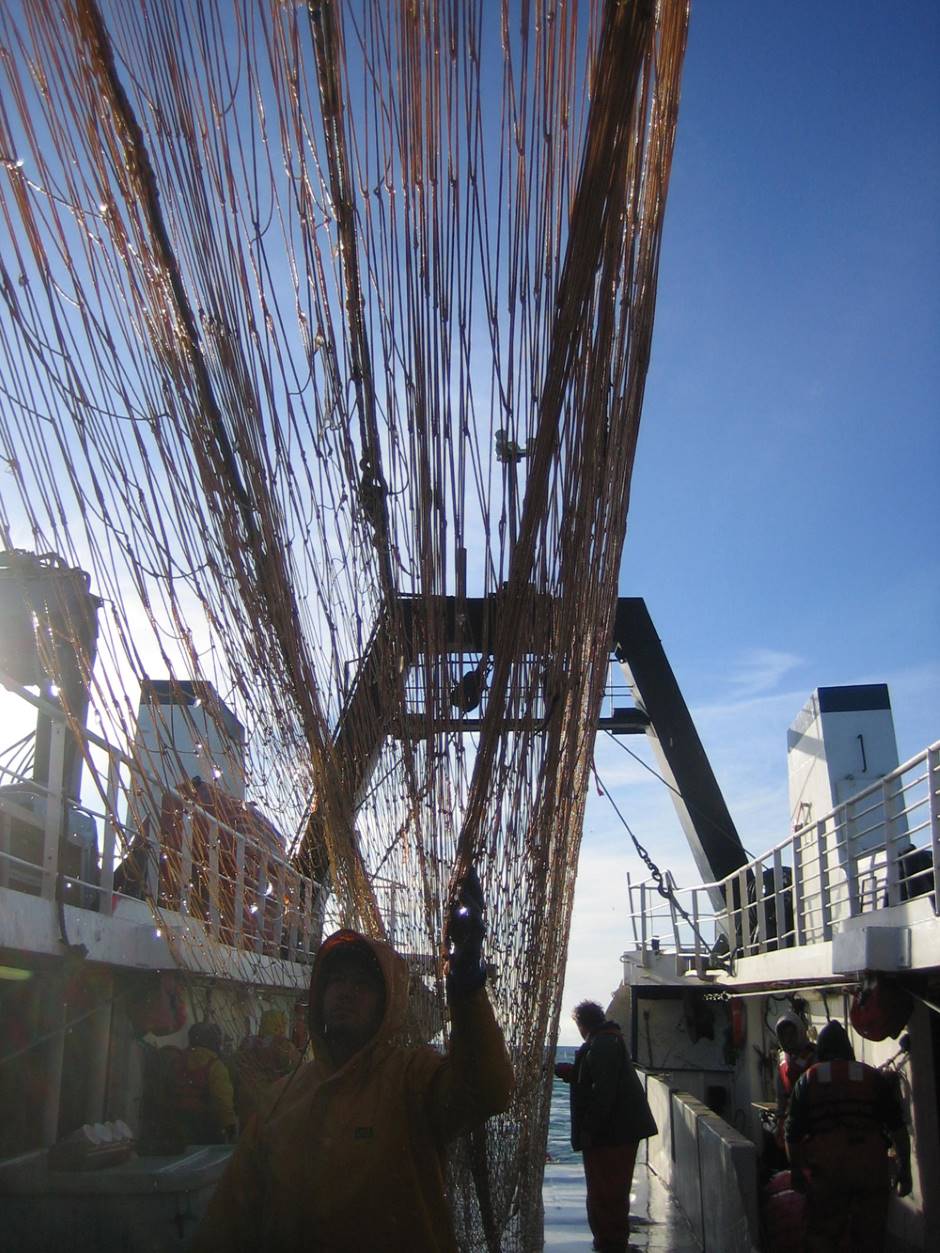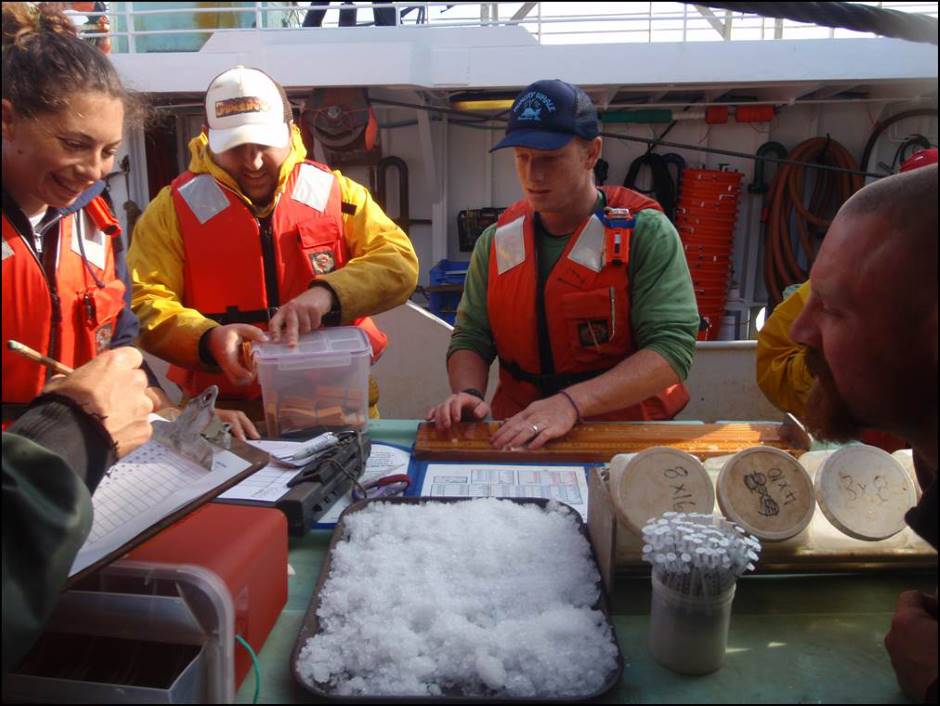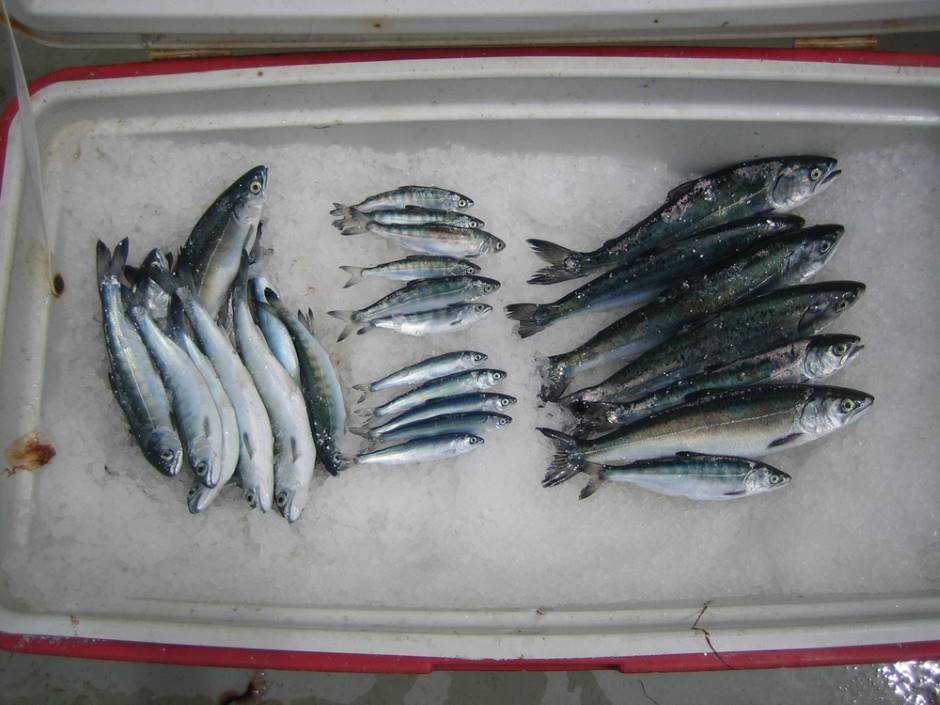Gracious hosts: Salmon carrying more parasites are healthier
The June sun shone down on the deck of the F/V Frosti as it trawled the Pacific’s North California Current, and James Losee had parasites on his mind.
Well, not literally.
Losee’s passion for parasites had become something of a joke that summer in 2004. He would watch as fellow researchers and the Frosti’s crew — real sea dogs who worked and lived off these waters — sorted through their recent catch, setting aside any juvenile salmon found among the assortment of sharks, jellyfish and other pelagic creatures. As the team set about releasing some of the bycatch, Losee would plunge into the mix, hoping to pluck a few parasites off the stunned fish before they were returned to the sea.
A fish biologist with the Washington Department of Fish and Wildlife, Losee was participating in his second 10-day research voyage on the Frosti, the first of which took place in June of 2002. He and the other researchers were trying to “understand what makes or breaks salmon in the marine environment,” he said.
Indeed, it’s those first two to three weeks that salmon spend in the brine, just six inches long and shimmering with navy-silver scales, that stand to make — or more likely break — the young fish. An estimated 95 to 99 percent of salmon will die there, not far from the mouth of whatever river spawned them. So what factors, the researchers wondered, set the lucky one to five percent apart?
Counterintuitive as it may seem, Losee and his peers say that the presence of parasites can indicate a healthy salmon. And the greater the diversity of parasites, the healthier the salmon. Losee and NOAA parasitologist Kym Jacobson developed the study, and published their findings online ahead of print in the Journal of Fish Biology.
“It was a pretty cool operation for someone who likes to look at fish,” Losee said regarding the study, which was part of a larger examination of juvenile salmon that began in 1998. “I was kind of like a kid in the candy shop.”

The crew trawled nets in the Pacific’s North California Current for juvenile salmon (Credit: James Losee)
The Frosti and its crew were right at home trawling its nets through the top 30 meters of the water column for 30 to 60 minutes at a time. This was what they did for a living, after all. But instead of selling their catches at the dock, the seamen turned the netted fish over to the researchers to pick through. They set aside juvenile specimens of five salmon species, returning adult salmon and any other marine animal to the water. After taking samples of blood, fins and scales, the researchers froze the fish and sent them back to the lab for a full necropsy.
“You have this impression that if you tow a net for 30 minutes or an hour, you’re going to come up with thousands of fish,” Losee said. “But there are these vast expanses where there’s nothing. It’s like a desert. Sometimes you’ll go days without seeing a fish.”
While the scientists and the crew got along swimmingly, Losee said the differences between the two groups were apparent.
“These guys make a living off of catching a lot of fish, so every time we’d pull up the net with zero catch, you’d see the fishermen get anxious and apologize,” Losee said. “Sometimes if you’d see a school of tuna jump, you’d feel the boat sort of veer toward them.
“It was kind of a conflict: fishermen trying to catch a lot and scientists just wanting to know what’s there.”

Fish species identification work abord the F/V Frosti (Credit: James Losee)
Lucky for the researchers, there were plenty of salmon. Between both voyages, the researchers examined 411 juvenile salmon for trophically transmitted parasites. Necropsy revealed parasites in the stomachs, intestines, body cavities and swim bladders of the fish. And the biggest and fastest-growing specimens yielded a motherlode.
But how could that be? The study itself opens with a line that seems to invalidate any correlation between prosperity and parasitism: “Parasites, by definition, survive at the expense of their host.” The key here, Losee says, is that trophically transmitted parasites require multiple hosts to complete their life cycle, and they need to ensure that those hosts remain relatively healthy.
“The majority of parasite infections are at a really low level,” Losee said. “The energy tax isn’t measurable.”

Some of the crew’s catch (Credit: James Losee)
Earlier studies have shown that the healthiest ecosystems contain the highest diversity of parasites. Losee thinks that a similar principle carries over to individual fish. Salmon hosting more diverse parasite populations have likely dined on a wider variety of prey across more diverse habitats.
Aquatic habitats unaltered by humans produced the fastest-growing salmon with the richest parasite populations. The Columbia River, vastly changed by dredging and the installation of dams, produced fish with the lowest parasitic diversity of any source river in the study. Losee said “a lot more work would need to be done” to determine precisely why fish from the Columbia River make their way to the ocean with so few parasites, but that’s partially what this research is about: finding new indicators for fish health.
“The overall goal is to develop tools for managers to use that predict how fish are going to do three or four years later,” Losee said. “Maybe there’s more to parasites than how they’re harming their hosts.”

0 comments